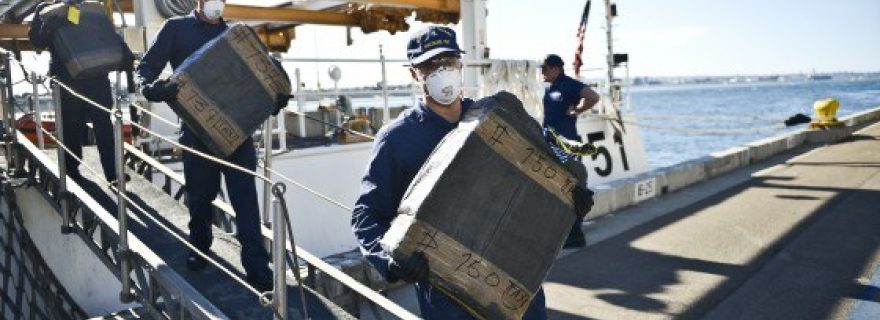Drugs in the time of corona: how has the international illicit drug trade been impacted by the COVID-19 pandemic?
The global pandemic has had far-ranging impacts on the international illicit drug trade. With broken supply chains, the production, distribution, and use of drugs worldwide has been altered. This post traces recent developments in the global illicit drug trade during the COVID-19 pandemic.
The international illicit drug trade has been hit hard by the global pandemic and the introduction of various drastic measures to halt its spread. This lucrative illicit market has been experiencing broken supply chains, increased delivery difficulties, and an uncertain consumer-base that is largely on lockdown. According to a Drug Enforcement Administration (DEA) official, nearly all drugs are experiencing supply chain disruptions amidst a wider disruption of global trade. While the concrete impacts depend on the drug itself and its supply chain, we can see some clear overall trends since the beginning of the pandemic.
Production
On one end of the cocaine supply chain, coca leaf farmers in Peru are reporting a 70% decrease in the price of the leaves. Traffickers further down in the supply chain, including producers and distributers, are having difficulties obtaining gasoline and other key chemicals for the manufacture of cocaine, and are struggling to move the leaves and the product. As a result, cocaine production appears to have largely halted.
The production of synthetic drugs such as methamphetamine and fentanyl has also been impacted by the pandemic. Mexican cartels, which produce most of the methamphetamine sold on the US market and also produce large amounts of fentanyl, have been struggling to obtain chemical precursors for these drugs. Closed factories, staff shortages, the jump in price of chemicals, and global trade restrictions have severely disrupted the precursor supply chain for methamphetamine, causing supply shortages of the final product.
Distribution
This opioid shortage in the US has been precipitated by the partial shutdown of the US-Mexico border, making it more difficult for dealers to move their products. Indeed, global border restrictions shutting down transit and commerce as well as greater authority controls have made it more difficult for traffickers to smuggle drugs both internally and internationally. An official working at the Brazilian seaport of Santos stated that cocaine seizures in March 2020 had decreased 67 percent compared to March 2019.
However, dealers are starting to adapt to these kinds of interdictions. According to the US Customs and Border Protection (CBP), cartels appear to be increasingly moving their products underground through cross-border tunnels, or aerially with drones. In addition, the United Nations Office on Drugs and Crime (UNODC) found that there are “signs of increased use of maritime routes to traffic heroin to Europe” through a new route deemed safer by traffickers. Drug shortages as well as difficulties in moving drugs into countries has led to a sharp increase in their prices.
Demand
At the last stage of the supply chain we are witnessing a change in drug demand. The demand for cocaine and other party drugs such as LSD and MDMA has dropped, and with lockdown measures globally in place, consumers are opting for other drugs such as marijuana. A drug dealer in Mexico City described how he has sold only about 20 percent of usual quantities of LSD and MDMA since the lockdown began. On the other hand, the demand for marijuana has sharply increased in many cities across the world during the lockdowns, with some deeming it an essential product and panic-buying it. Contrary to drugs such as heroin and cocaine which rely on “long, transregional shipments”, weed is more often locally produced, and so its supply is not expected to be as heavily affected.
South Africa’s lockdown model has also provided insight into what happens when certain legal drugs become illegal. Since the beginning of the lockdown on March 27th, the South African government banned the sale and transport of alcohol and cigarettes. As a result, the black market for these goods has thrived, and prices have almost doubled. Conversely, the Dutch closure of legal coffeeshops in the country was quickly reversed after concerns emerged over the expanding presence of street and online drug dealers. It remains to be seen whether important conclusions regarding drug legalisation can be extracted from the South African and Dutch experiences.
More generally, drug dealers have become “more active and creative” during this crisis, with some in the United Kingdom “posing as joggers and NHS staff”, and the French Monitoring Centre for Drugs and Drug Addiction (OFDT) found that some have even started to sell gloves, masks, and hand gel. The UNODC worries that these kinds of strategic moves will enhance drug dealers’ image among the general population.
Societal impact
Unfortunately, the impacts have not been only economic or trade-related. Human and societal impacts are also widespread. There are concerns that due to shortages, dealers have been forced to cut drugs with stronger and more dangerous additives. The harm-reduction/treatment community worries that with social distancing measures, many clients are struggling to obtain clean needles, addiction treatments, or overdose-reversal medication. Finally, the livelihood of those involved in drug supply chains is also threatened, for instance as with the Peruvian coca leaf farmers.
The global COVID-19 crisis helped show how interwoven and truly global the illicit drug trade is – supply chains are complex, with international structures that depend on a wide range of actors and sectors. How the international drug trade will continue to evolve as the world opens up again remains to be seen; nonetheless, this pandemic provides us with unique insights into its inner workings. Criminal groups have been able to react and adapt to market changes, yet have also greatly suffered from being organised in such an international and networked way – a disruption at one level of the supply chain has profound impacts that affect the rest of the chain. Recognising this important vulnerability is significant for anti-trafficking efforts.


